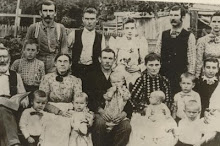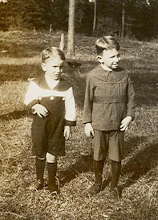The first Americans who inhabited what is now Panola County, were of two confederations: the Caddo and the Hasinai. The Sabine River was more or less the dividing line. The Caddo tribes lived from the Sabine northward to the Red River and into the Texarkana area. The Hasinai tribes lived west and south of the Sabine to the Angelina and upper Neches Rivers. Both confederations were settled people who had been living in the region for centuries. Apparently there was a tribe of Hasinai living in the Martin's Creek area and another near Old Trammel's Trace in southwest Panola County. A village of the Caddo confederation was in the Deadwood vicinity long before the migration began from the United States. Of the "Timber Tribes" of East Texas, there were two main divisions, the most important being Hasinai (ha-see-ni). These were the Indians commonly called Tejas by the Spaniards. There were several tribes of the Tejas. Although they were hunters, they were not fierce and warlike as were the Indians of the plains. Before any European explorers reached Texas, these confederations were friends with each other. Tejas meant "friends" or allies; and this title continued to be used by both Spanish and French in referring to the Hasinai and the name for the state came from Tejas. The Spaniards first named the land between Sabine and Angelina River "Texas" but later they expanded the territory to the Brazos, and still later, to the Rio Grande. In the early 1800's the Cherokee Indians, from their original home in the western Alleghenies, migrated to East Texas. They settled principally in Cherokee County, but some wandered into Panola and Rusk Counties. The first American settlers in Panola County were not disturbed by the Caddo nor Hasinai tribes. The bountiful supply of wild game made life encouraging for the pioneer settlements until after the Texas Independence. In 1837, the year after the Battle of San Jacinto, Mexican agents incited the Cherokees to hatred toward the settlers. The Cherokees were able to enlist the Caddoes as Allies and together they made attacks on many unprotected settlements. In February, 1837, an Indian attack hit the REED-HERRIN settlement near Clayton. In a skirmish with some half-dozen families in this settlement ISAAC REED JR., son of a founder of the settlement, was shot. When the Indians had become especially active, ISAAC REED had built a fort for protection of his settlement. When the news spread about Indian unrest, the settlers in the REED-HERRIN area moved into REED'S Fort. One evening the men went out to scout the countryside to see the damage done by Indians. They found a band stealing corn from REED'S son-in-law, HOUGH SHEPPARD. In the confrontation which followed, ISAAC REED JR., was mortally wounded. He killed the Indian who shot him and the body was found the next morning, and though REED was brought into the fort, he died during the night. He was wrapped in a blanket (or quilt) and buried, the first grave in Old Bethel Cemetery, near the REED home.PANOLA WATCHMAN, CARTHAGE, TEXAS, MAY 11, 1975
Tuesday, September 10, 2013
Indian Troubles near Clayton from "Know Your Heritage" By Leila B. LaGrone
Indian Troubles near Clayton "Know Your Heritage" By Leila B. LaGrone
Subscribe to:
Posts (Atom)



